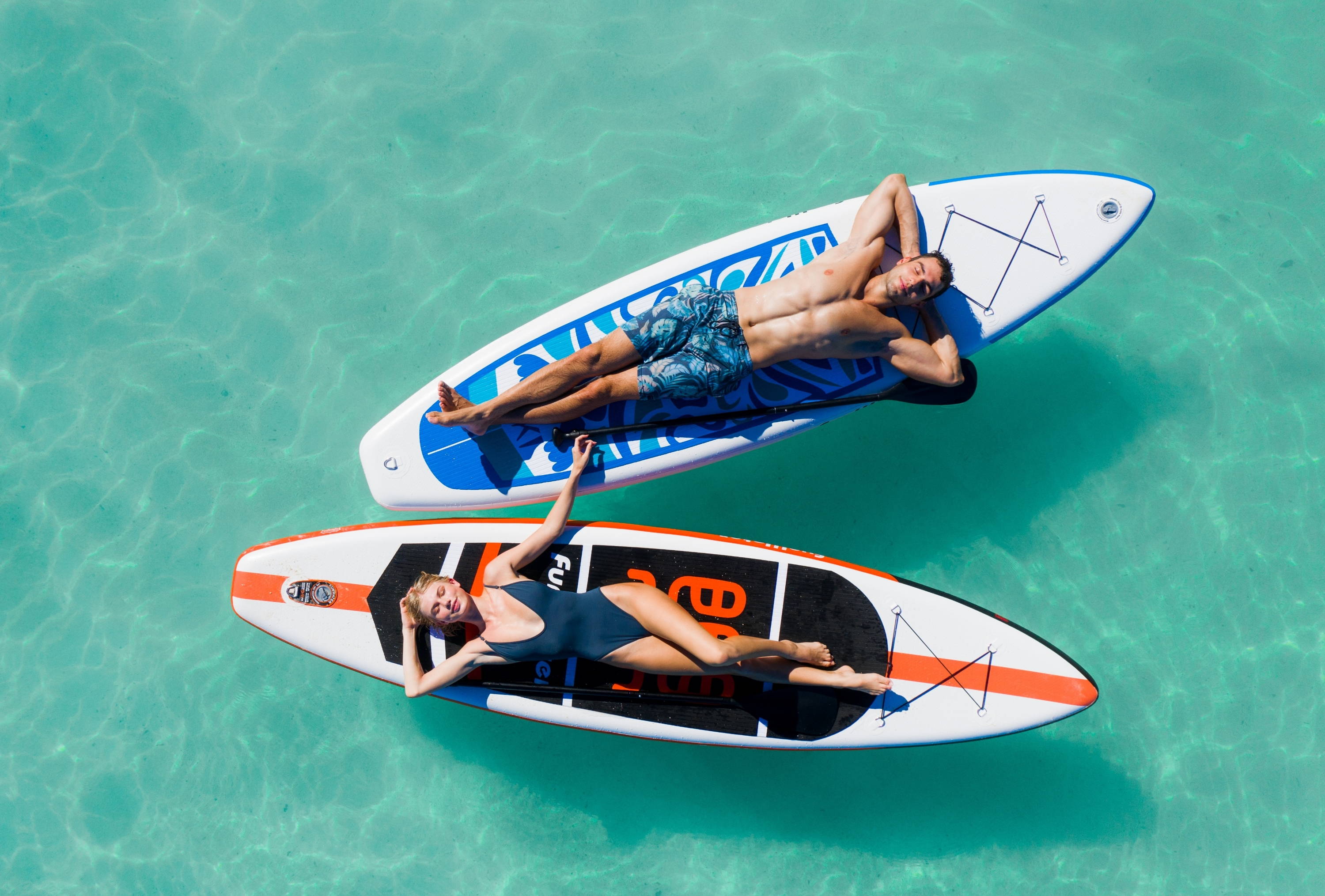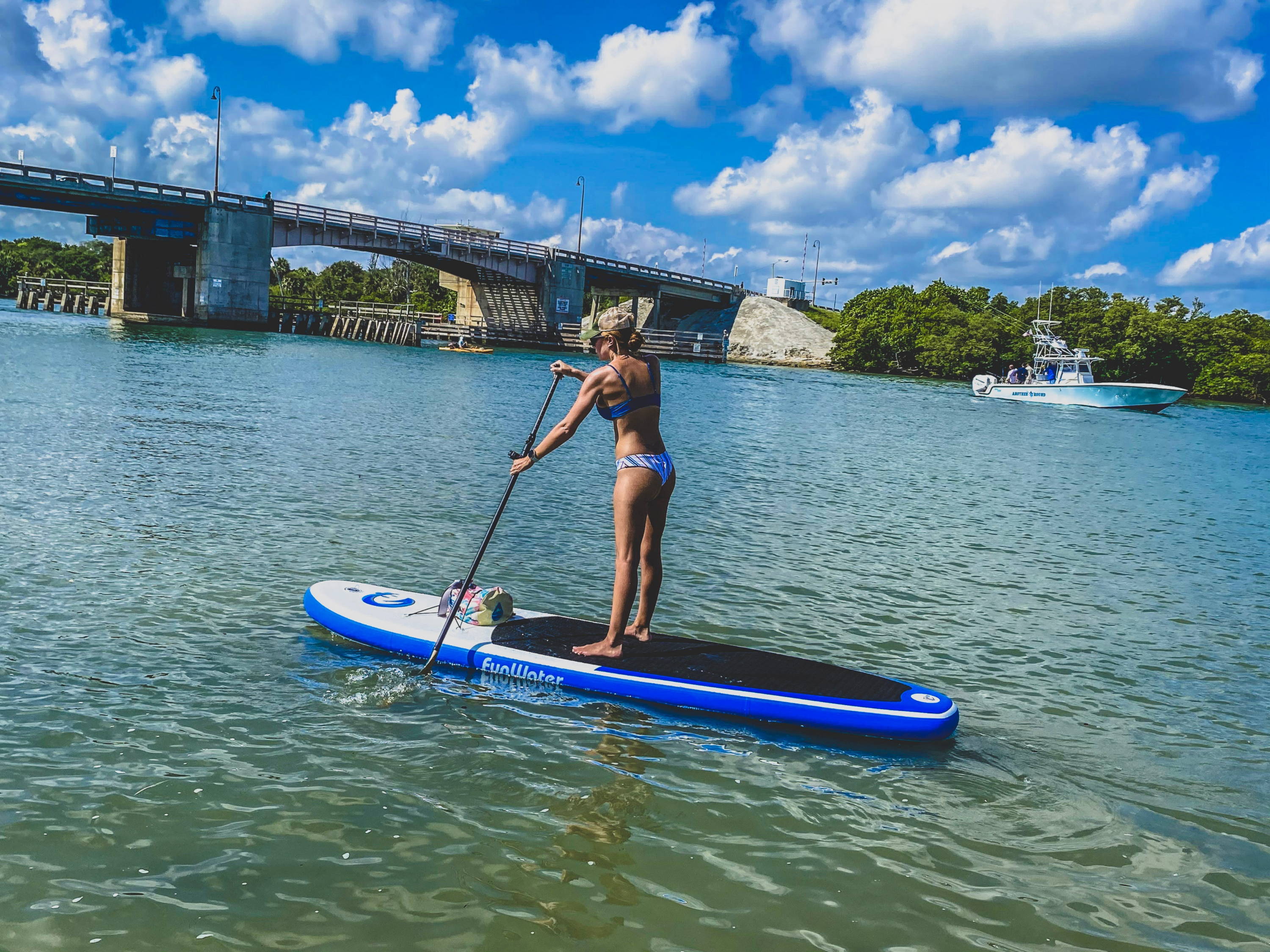

1. What is a paddle board?
When you lift a paddle, what comes to your mind? Is it the thrill of surfing on the beach, paddling on a quiet lake, or exploring a river with rapids? Let me tell you now!
The name thinks straight up, stands on the water, stand upright on the single meaning. Because the board stands for about 60 hours, on the local beach, it is used for the convenience of management and convenient movement. The field of view makes it easy to observe what's going on around you, and you can expect to see its surges that are easy to learn, suitable for places that have worked well in recent years, and those that have been in use in recent years. But in the process of balancing abilities, such as planning abilities, can be done within an hour.
However, the ability to balance must be mastered within an hour. This skill varies from person to person. The person with the best balance may soon be better than the opposite. Since it takes a few days to master it, don’t worry about it. Paddles are definitely better at mastering balance than surfboards. It's its high engagement and curtain wall features that make it one of those SUP paddleboards that even rookie players can get their hands on right away, which is now America's watersports. The whole process is Stand Up Paddle, referred to as SUP, so paddle board players are also SUPER! Leisure time, enjoy the sunshine together, and enjoy a happy thing, it is also a happy thing.
2. Paddle board volume and weight
The volume and weight of the paddle board are two very important reference factors when choosing a board.
Volume: The volume of the board can be expressed in liters. The buoyancy created by the volume of the board makes the board capable of carrying heavy loads. The larger the volume of the board, the more weight it can carry. If a board is wide and thick, it can have good buoyancy. In the same way, if the long board is narrow and thin, the buoyancy will not work. So, if a 200-pound surfer wants to surf, he can choose a short, maneuverable, but bulky board.
Load capacity:
Each board has a certain load capacity. It is very important to know the load capacity of the board. If your weight is too heavy for your board, your board will have a deep draft and it will not be easy to paddle.
3. Classification of paddle boards
Paddle boards can be roughly divided into five types: ALL-ROUND, SURF, TOURING, RACING and YOGA.
These types of paddles are usually wider and larger than other paddles, and it has decent stability for beginners.
RACING:
This paddle is longer and narrower, designed for racing as a racing SUP. Only when you reach a relatively fast forward speed, the board will have better stability, which is not suitable for beginners.
SURF:
This paddle board is smaller than others, ideal for surfing with SUP and whitewater experience in rivers. It can make some cool moves with the paddle, but it is not suitable for beginners.
YOGA:
The board has a soft top for doing yoga movements. Its shape resembles a rectangle. With the largest area and the best stability, it can accommodate 2-3 people at a time. At the same time, there are other places on the board for tying your exercise equipment such as elastic bands. Anchor to prevent being carried away by currents.
It is longer than the average board. It is used for long-distance and fast paddling. It is suitable for long-distance paddling of several kilometers in large lakes and bays. It is also acceptable for beginners.
4. Paddle board complete equipment
-Paddle board
-Removable sup fins (increases water control and stability)
-Adjustable aluminum paddle (the paddle is generally 15-20 cm higher than the user for the best effect)
-High pressure pump (Easy to inflate and deflate at any time, small size, easy to carry)
-Travel bag (30L large capacity, good waterproof performance)
-Elastic sup leash (High quality material for easy carrying)
-Foot rope (The foot rope can be connected to your paddle board, which is convenient for you to get on the board quickly when you fall into the water. At the same time, the buoyancy of the paddle board itself ensures the safety of the player to a certain extent.)
-Waterproof phone touch (Excellent waterproof ability allows you to carry your mobile phone to record a good life at any time)
-Life jacket (check whether all functions of the car are complete before launching, put an end to slack, and safety first)
5. Choose the right paddle for you
When choosing a paddle board, consider: where you want to paddle, whether it is recreational or racing, whether you are a novice or a veteran, etc. Different types of paddleboards have different experiences. As the saying goes, if a worker wants to do a good job, he must first sharpen his tool.
Short board(below 2.8 meters)
Good for surfing. Good maneuverability, children's surfboards are under 2.4 meters.
Medium board(2.8m-3.7m)
Ideal size for versatile boards. Glide in the lake or simply surf in the sea.
Longboard(3.8m-4.3m)
This one is suitable for competition. The longer the board is, the faster it is and the easier it is to draw straight lines. If you're interested in racing or hiking, you'll need a longboard to race, or glide long distances to your camp.
Wide board(80cm or wider)
Wide boards are more stable and easier to stand on than narrow boards. The disadvantage is that it is slow.
Narrow board (74cm-76cm)
The narrow board is faster and less stable.

6. Standing skills
The board is placed on the dive, stand next to the board, the paddle is leaned against the board like a stand paddle, and the paddle is inserted into the water.
Hold the middle part of the edge of the board with both hands, and hold the paddle in one hand at all times.
Kneel down to the middle of the board and place the paddle flat on the paddle.
Kneel down to feel the balance point of the paddle, so that the head of the board does not lift up and the tail does not sink into the water.
Hold one side of the board firmly with your hand to stabilize it.
When you feel ready, stand on one foot, then stand up, where your knees are on your knees. Of course, you can also bring a friend to help you hold the board and let you stand up.

7. Paddling skills
When you paddle on the right, hold the lower part of the paddle with your right hand and the upper part of the paddle with your left hand.
The camber of the blade is facing away from you, which may seem counter-intuitive to you at first.
Keeping your arms straight, paddle with your body.
As you paddle, push down with your upper hand.
Insert the paddle into the water first, then pull it hard to the ankle to get out of the water.
You can take it slowly at the beginning, and you don't need to use a lot of effort at the beginning.
At the beginning of your stroke, paddling with a small thrust force will make each stroke more effective and farther.
To maintain a straight line, alternate sides of the row, switching sides every 4-5 times.
When changing sides of the paddle, don't forget to change the up and down position of your hands.
8. Paddling position
Stand and row
Keep your feet as balanced as possible, shoulder-width apart, and stand in the middle of the paddle.
Keep your feet forward, knees bent forward, and back straight.
Use your hips for balance, not your upper body.
Keeping your head and shoulders straight and steady, use your glutes to position your body.
Look straight ahead, not just your feet.
Sit and row
Newcomer pose, master the best balance, and play in the water with the fish that are approaching.
Straighten your feet to ensure the smoothness of the row.
Sitting and rowing is much easier, just keep your center of gravity in the middle of the paddle.
Kneeling and rowing
Master the balance, maximize core strength, fast and furious!
Kneel on the board with both knees and adjust your position as needed until the board feels stable enough.
Keeping your head and shoulders stopped and steady, use your legs to adjust your body position.
Lie down and relax
There is no most casual, only more casual.
After lying flat, the whole sky is in front of your eyes. Once you've mastered your balance, it's time to start enjoying your paddling.
9. Board Care
Washing
Rinse the entire paddle with fresh water and natural soapy water to remove dirt and debris. If using in sea water, be sure to rinse with fresh water, salt is corrosive. It is important to flush the salt off the board.
TIP: When cleaning your stand-up paddle, be sure to scrub gently to avoid damaging the pads. Do not use abrasive cleaners as they may wear down the deck mats and PVC.
Rinse again
Then rinse thoroughly after cleaning to remove any soap residue.
Completely dry
After cleaning the board and paddle, dry the paddle completely with a soft towel. Make sure the board is completely dry, then deflate and pack. This prevents the growth of bacteria and mold caused by moisture.
Storage
The biggest advantage of the inflatable board is that it can be installed in a storage bag or backpack, which is easy to carry and has a small storage space. Store the bag in a dry place out of direct sunlight.
Well, the content about paddle boards is introduced here today. If you have any other questions, you can contact our customer service email: info@funwaterboard.com. We will get back to you within 24 hours.